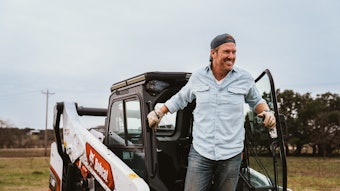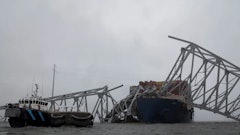
A general contractor is like the head coach of a football team: the buck stops here. When there are problems on a construction project, the owner expects the contractor to fix them.
Sometimes a contractor can compel the subcontractor who caused the problem to fix it. For example, if the HVAC system isn't working properly, the contractor can have the HVAC subcontractor patch the leaking ducts or re-balance the system. But sometimes it doesn't matter who or what created the problem; it is the contractor's responsibility to fix it. When such responsibility is imposed by law, it is called a non-delegable duty.
All of a contractor's most important non-delegable duties involve subcontractors. These duties involve three primary areas: hiring qualified, competent subcontractors; ensuring job site safety; and preventing construction defects.
Hiring the Right People
Perhaps a contractor's most critical function is selecting the right subcontractors. Hire the right subcontractors and safety problems, construction defect problems, insurance issues and the myriad of other problems that plague contractor/subcontractor relationships either disappear or are reduced to a bare minimum.
Making careful hiring choices doesn't just affect your stress level. Contractors are legally responsible for the consequences of hiring subcontractors who are not qualified to do their assigned jobs.
In selecting a subcontractor, you can't simply choose the lowest bidder. In fact, a bid that is significantly lower than the next lowest should raise some red flags. In these situations, the contractor should confirm that the bidder has the correct project specifications and has prepared his bid accordingly. Even then, the careful contractor should monitor the subcontractor's work to ensure that project specifications are met and progress is on schedule.
In a perfect world, the contractor knows the potential subcontractors through past experience or word of mouth. But jobs can't always be staffed from a Rolodex. Maybe none of the usual suspects are available, or the project's specifications require a certification they lack. This is when the contractor must perform his due diligence and investigate whether the subcontractor has the necessary expertise and resources to get the job done. It is essential to ask whether the subcontractor has done similar jobs, request client references and copies of previous shop drawings, and speak with the company foreman.
The contractor must be certain that the subcontractor will not be overwhelmed by the project's scope and schedule, and has the manpower and management tools to meet the scheduling requirements. Past performance does not always predict the future, but failure to investigate a candidate's track record may leave the contractor liable for scheduling delays caused by hiring unqualified subcontractors.
The contractor should also ensure that the subcontractor has the requisite financial resources for the project. Using partial payments from one job to fund another is an invitation to litigation. One way to check on a company's financial stability is to contact its suppliers and ask if it pays its bills promptly. For protection moving forward, insist that the subcontractor provide releases from its suppliers. It might be wise to consider arranging to use two-party checks, or a joint checking account for purchasing materials. And when dealing with an unfamiliar subcontractor, tight deadlines, and large amounts of money, it would be wise to ask for a performance bond.
On-Site Safety
Construction sites are inherently dangerous places. In these hazardous environments, in some states, the contractor bears the ultimate responsibility for job site safety, making subcontractor selection more crucial than ever.
When investigating a potential subcontractor's safety record, the contractor may again rely on the subcontractor's reputation and history. But, the less the contractor knows about the subcontractor, and the more complex the work to be performed, the greater the need for a thorough investigation.
If feasible, even after work has begun, the contractor might conduct on-site safety inspections and follow-up safety training. For example, in the case of a roofer, the contractor should check if safety nets are in place and if workers are using retractable reels to let them travel across roofs while remaining tethered.
Also investigate whether the subcontractor's crew is familiar with their jobs and equipment. If workers are untrained, who will be supervising not only their work but their work environment?
The contractor's duties don't end with the selection of careful subcontractors. A responsible contractor will have safety coordinators, weekly safety meetings (i.e., "tailgate talks"), ensure workers are trained on the equipment they are using, and have emergency equipment at hand and in working order.
Accidents will happen. Inevitably and unfortunately, some of them will be serious. A contractor cannot guarantee any worker's safety and construction sites can never be made safe. But job site safety should always remain everyone's paramount concern. A careful and responsible contractor will make the sites on which he works safer.
Construction Defects
The contractor is responsible to the owner for overall quality control, including work done by subcontractors. When problems occur, the owner only needs to look to the contractor. The contractor, in turn, usually has a contractual right of indemnification from the subcontractor. But contractors can find themselves legally responsible for defective work while the subcontractor's negligence is excused!
Contractors must walk a fine line between supervising subcontractors too much or too little. It is when they fall off this tightrope that contractors find themselves vulnerable to unexpected legal exposure.
Sometimes the contractor tells the subcontractor in too great detail how to do their job. When that happens, the contractor becomes responsible for the result. For example, a subcontractor is hired to grade a lot and install a mobile home. The contractor gives specific instructions on how the job should be done and supervises the work. The grading is allegedly done improperly. Since the contractor directed the job, the contractor is now responsible for the end result.
Worse yet; in certain situations, the contractor's executives may be personally responsible for the defective work. If the contractor's corporate officers were "hands on" participants in the allegedly negligent acts of construction, they may be personally liable for the resulting damages. An executive who operates equipment or is on-site directing workers risks losing the protection of the corporate shield.
And then there are those diametrically opposite situations where the contractor leaves the subcontractor totally unsupervised! The contractor who fails to supervise cannot escape responsibility for the subcontractor's negligence. The law recognizes that this would encourage contractors to hire inexperienced subcontractors and claim that any defects were the fault of the subcontractor. The contractor's liability in such situations may not be based on the defective work, but the failure to exercise his assumed duty to direct and control the work.
Construction projects spawn litigation. Contractors who understand the scope of their responsibilities will realize that some of these responsibilities cannot be transferred and govern themselves accordingly. As such, they will spend less time preparing to defend themselves in court and more time performing the administrative functions on which any project's success depends.
Allan Levin is a partner at Cozen O'Connor, where he concentrates his practice in complex commercial litigation and is a member of the firm's construction practice group.




























